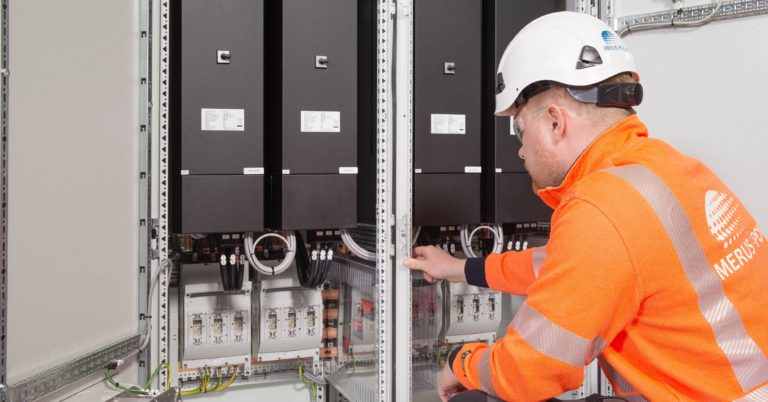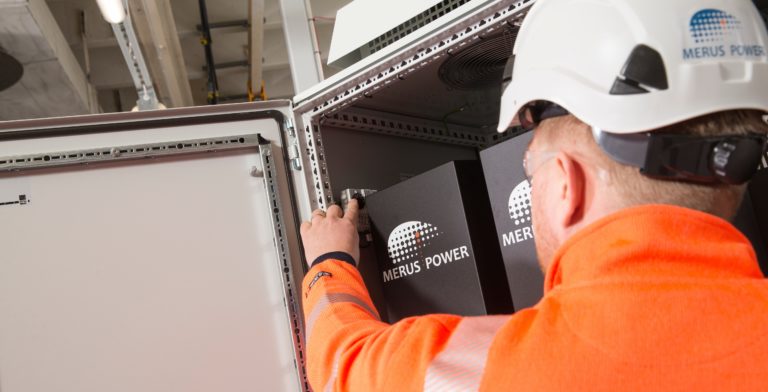
Understanding power quality challenges in water and wastewater treatment plants
Water and wastewater treatment plants play a critical role in maintaining public health and environmental safety. These facilities are laden with a complex network of electrical and mechanical systems that must work in harmony to ensure optimal performance. One aspect often overlooked but crucial to this balance is power quality. The ramifications of poor power quality can be disastrous, ranging from equipment damage to non-compliance with grid codes and interrupted service.
The culprit of poor power quality: non-linear loads
At the heart of many power quality issues in water and wastewater plants are non-linear loads, most notably Variable Frequency Drives (VFDs). These are commonly used to control the speed and torque of motors driving pumps, aerators, and other critical equipment. While VFDs offer excellent control and energy savings, they can introduce harmonics and other distortions into the power supply, thereby posing a risk to energy efficiency and grid code compliance.
How Variable Frequency Drives affect power quality
VFDs alter the voltage and current waveforms, leading to:
- Harmonic distortion: VFDs often produce electrical harmonics that can overload circuits, damage equipment, and decrease the system’s efficiency.
- Voltage imbalance: Non-linear loads can result in a voltage imbalance that affects the stability and reliability of the electrical system.
- Flicker: Rapid variations in load current can cause noticeable fluctuations in lighting and other sensitive equipment.
Severe consequences of poor power quality
The adverse effects of subpar power quality should not be underestimated, especially for facilities as critical as water and wastewater treatment plants.
- Regulatory compliance risks: Non-compliance with industry standards and regulations can lead to hefty fines and legal repercussions.
- Reduced energy efficiency: Poor power quality can compromise the energy efficiency of the entire facility. Systems affected by harmonic distortions or voltage imbalances often consume more power than necessary for the same output, leading to increased energy bills and a larger carbon footprint.
- Increased maintenance costs: Reduced equipment life cycles and more frequent replacements are often the direct result of poor power quality.
- Operational downtime: Time is of the essence in water treatment, and unplanned outages can have severe consequences for public health and safety.
- Equipment failure: Motor winding failures, capacitor bank malfunctions, and transformer overheating can all be attributed to poor power quality.
Multiple benefits of improved power quality
Improving power quality brings a cascade of benefits to water and wastewater treatment plants, with energy efficiency standing out as a paramount advantage. Optimized power quality allows electrical systems to achieve the same output with less effort, translating to reduced energy consumption and operational costs. This effectively means direct monetary savings for the water utility. In terms of operational efficiency, the most valuable kWh is the one not used.
Optimized power quality helps facilities meet regulatory grid codes, minimizing non-compliance risk, which could lead to fines or legal action.
And the benefits don’t stop there. Enhanced power quality also leads to decreased operational downtime, as more reliable power mitigates the risks of unexpected equipment failure. Maintenance costs are also lowered due to less stress on electrical components, extending their lifespan.
In sum, while energy efficiency may be the most immediate benefit, improved power quality has a broad and positive impact on various operational aspects of water and wastewater treatment plants.
Grid code compliance: A key imperative
Ensuring compliance with grid codes is not merely a regulatory requirement but an operational imperative for water and wastewater treatment plants. Non-compliance can result in punitive fines and can jeopardize the plant’s ability to function efficiently. Thus, maintaining high power quality is essential for meeting these stringent codes, making grid compliance a critical criterion when evaluating power quality solutions.
Merus Power’s solution: active harmonic filtering
Addressing power quality challenges requires a focused approach. Merus® A2 and Merus® 4DRIVES active harmonic filters significantly enhance the operational efficiency and reliability of water and wastewater treatment plants by mitigating harmonic distortions and other power quality issues.
This leads to increased energy efficiency, improved equipment longevity, reduced maintenance costs, and minimized risk of operational downtime. By actively correcting these distortions, the solutions also help the plants meet regulatory compliance standards, thereby reducing legal risks and potential fines. Overall, the adoption of this kind of advanced technology serves as a long-term investment for a more sustainable and efficient facility.

Merus® 4DRIVES – Active Harmonic Filter for VFD
Merus® 4DRIVES is an optimized active harmonic filter for Variable Frequency Drives (VFD). It is our simple solution to complex power quality problems.

Merus® A2 – Active Harmonic Filter
Merus® A2 is a scalable, versatile, and durable active harmonic filtering solution designed and manufactured in Finland using innovative Merus® technology.
Conclusion
In summary, understanding and addressing power quality issues in water and wastewater treatment plants is not just a technical necessity but a critical aspect for the sustained well-being of the community and the environment.
By investing in advanced active harmonic filtering, water and wastewater treatment plants can enhance operational efficiency, ensure grid code compliance, and reduce long-term costs and risks associated with poor power quality.

